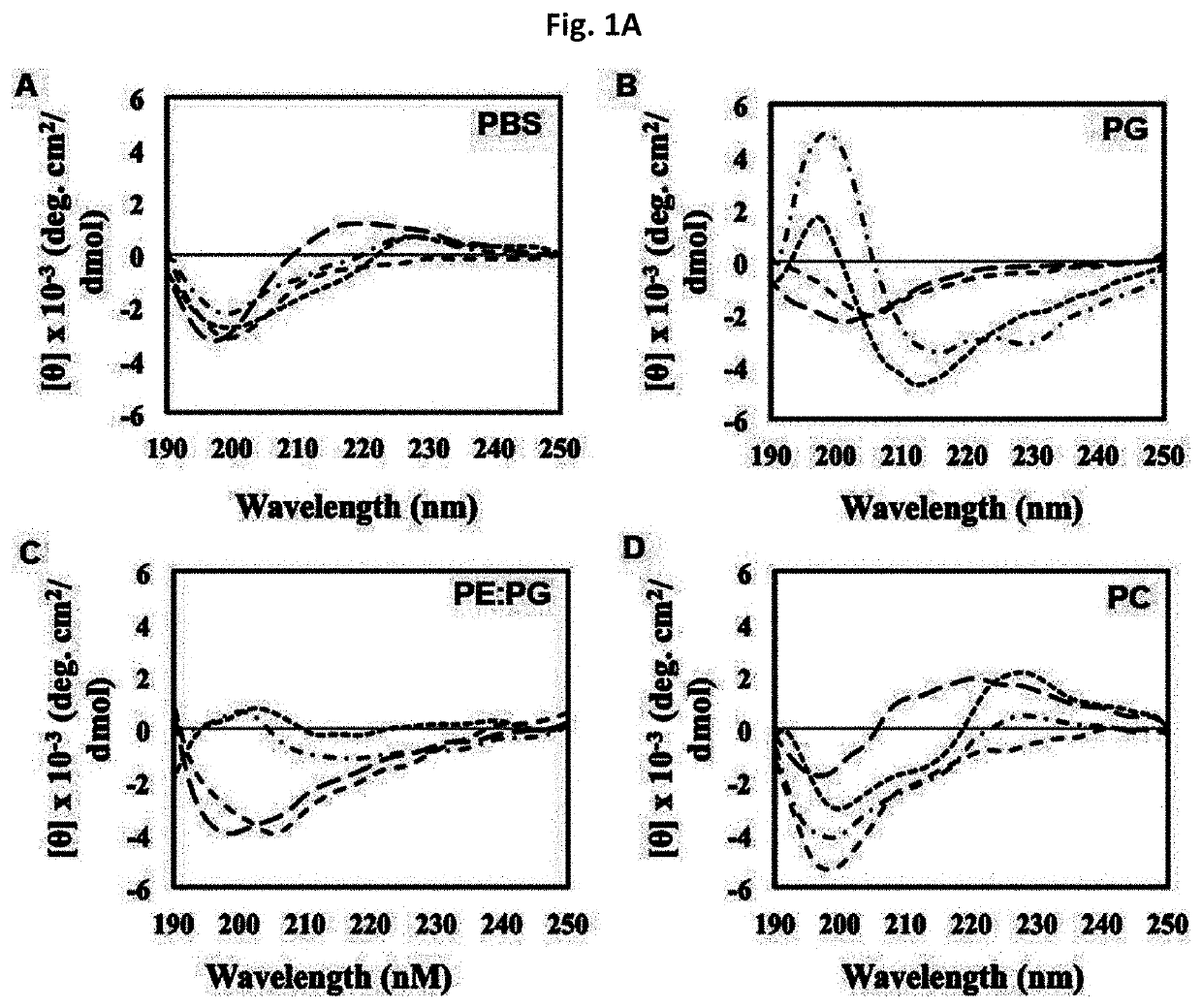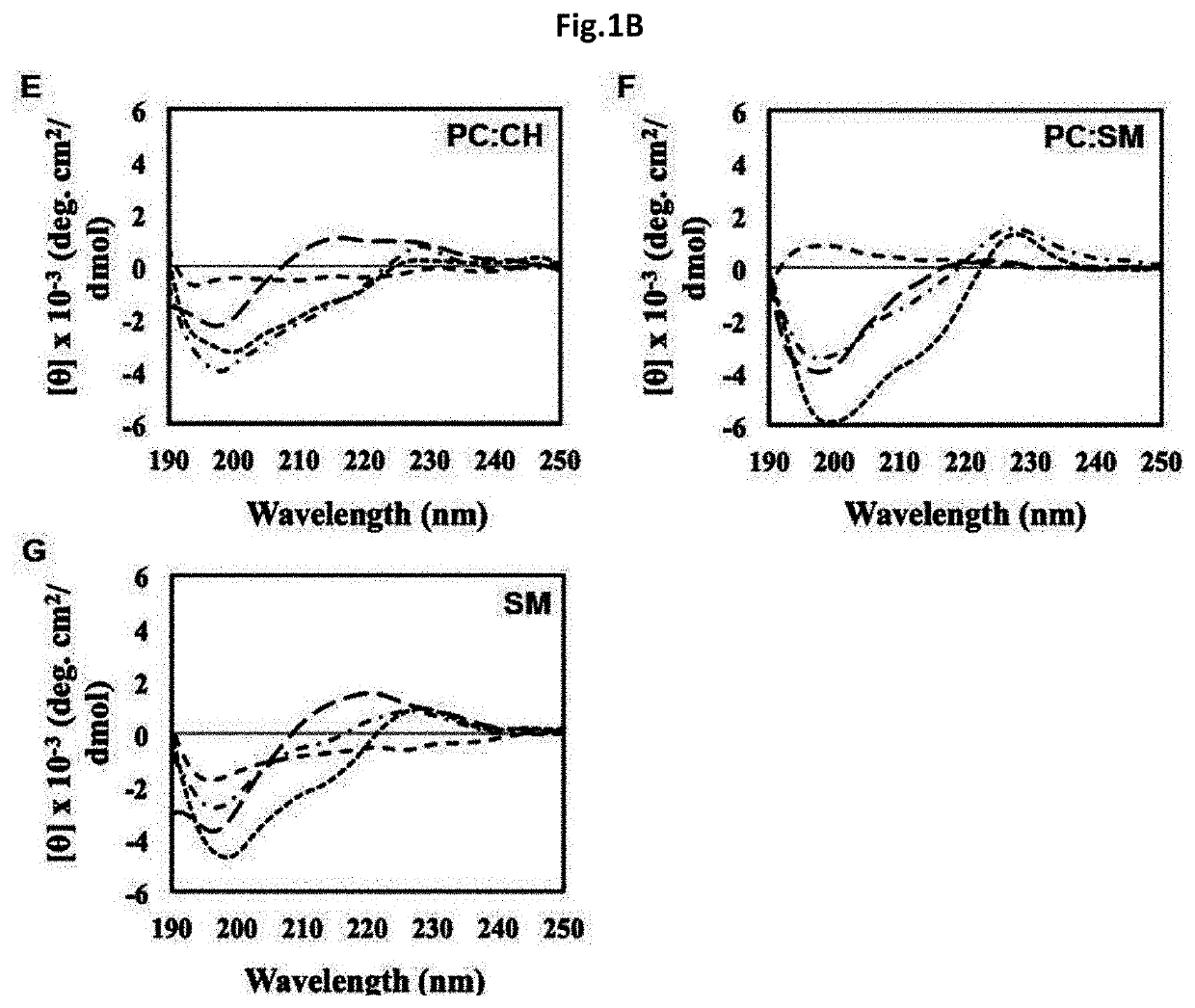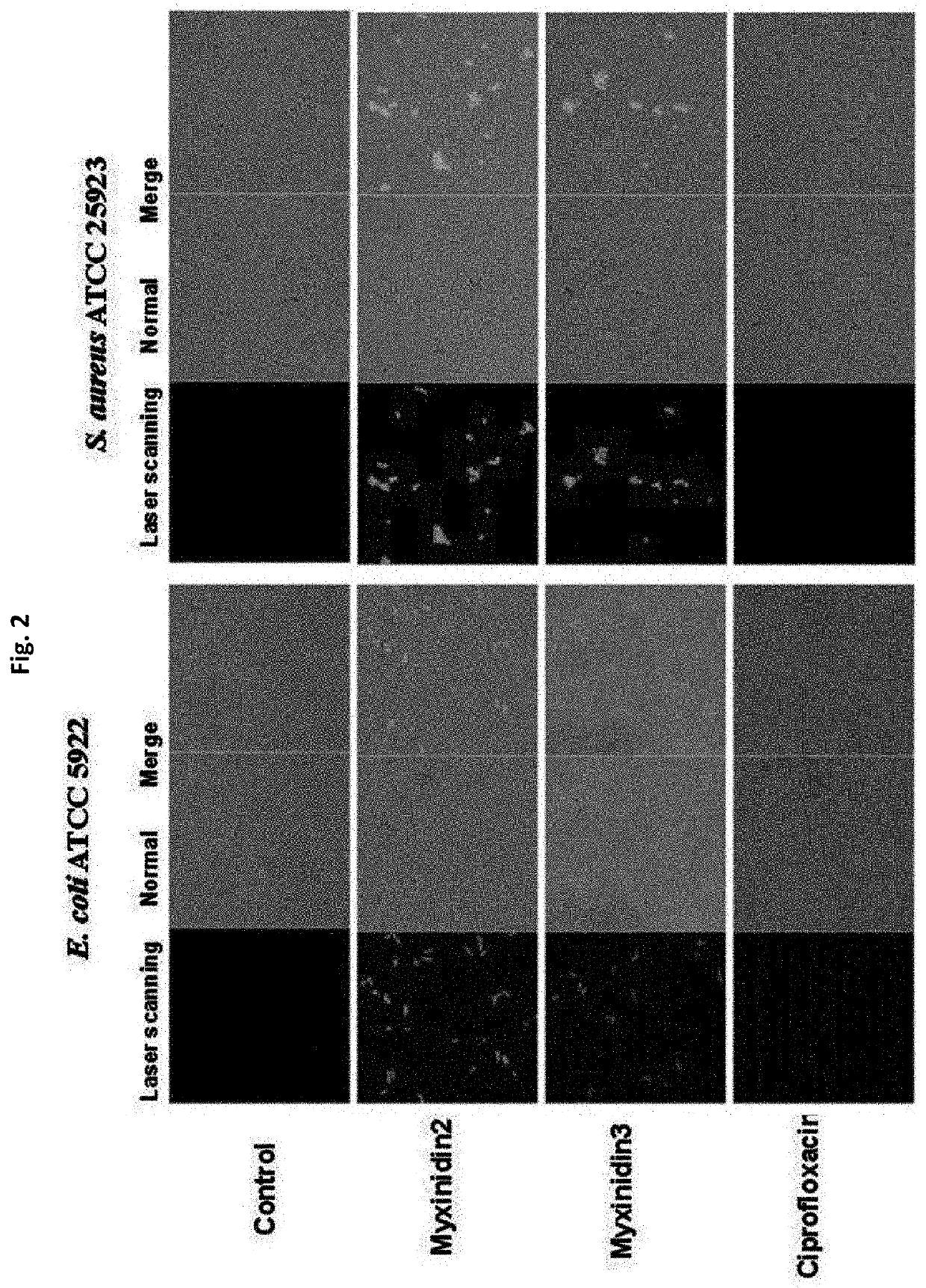Novel antimicrobial peptide derived from myxinidin peptide and uses thereof
a technology of myxinidin and antimicrobial peptide, which is applied in the direction of antibacterial agents, peptide/protein ingredients, drug compositions, etc., can solve the problems of bacterial cell death and resistance to antibiotics, and achieve enhanced antimicrobial activity and low cytotoxicity
- Summary
- Abstract
- Description
- Claims
- Application Information
AI Technical Summary
Benefits of technology
Problems solved by technology
Method used
Image
Examples
example 1
, Isolation, and Purification of Peptide
[0099]According to the solution phase peptide synthesis by Merrifield (Merrifield, R B., J. Am. Chem. Soc., 85:2149-2154, 1963), the inventors of the present invention substituted the 4th amino acid residue of the peptide having the amino acid sequence, which is described as myxinidin as a mother peptide, with histidine. The 1st and the 3rd residues were substituted with lysine and the 4th, the 9th, and the 11th residues were substituted with tryptophan. Furthermore, the antimicrobial peptide having the amino acid sequence described as myxinidin was synthesized by substitution of the 1st, the 3rd the 7th, and the 10th residues with arginine and substitution of the 4th, the 9th, and the 11th amino acid residues with tryptophan (Table 1).
[0100]Specifically, as for the peptide in which the peptide designed in the present invention has a carboxy terminal in NH2 form, a rink amide MBHA-resin was used as a starting material, and as for the peptide h...
example 2
nt of Antimicrobial Activity
[0103]To compare the antimicrobial activity of the peptide produced by the method of Example 1, the inventors of the present invention measured the growth minimum inhibitory concentration (MIC), which is minimum concentration of the peptide showing no dissociation of bacterial cells.
[0104]Specifically, the bacterial strain described in the following Table 2 was purchased and cultured in each medium to a mid-log phase. Then, after dilution to bacterial cell concentration of 2×105 cells / 100 μl, the cells were inoculated to a microtiter plate (NUNC, USA). Thereafter, myxinidin 1, myxinidin 2, or myxinidin 3 peptides which have been synthesized in Example 1 above was diluted, 1 / 2 times for each, with BSA (bovine serum albumin) solution in a 96-well plate. After adding the cells to a plate, the cells were cultured for 12 hours at 37° C. By using a microtiter plate reader (Merck Elisa reader, Germany), the absorbance was measured at a wavelength of 600 nm to de...
example 3
nt of Antimicrobial Activity at Salt Concentration
[0106]To compare the antimicrobial activity of the peptide produced by the method of Example 1, the inventors of the present invention measured the minimum growth inhibitory concentration (MIC), which is minimum concentration of the peptide showing no dissociation of bacterial cells, at salt concentration.
[0107]Specifically, the bacterial strain described in the above Table 2 was cultured in each medium to a mid-log phase. Then, after dilution to bacterial cell concentration of 2×105 cells / 100 μl, the cells were inoculated to a microtiter plate (NUNC, USA). Thereafter, myxinidin 1, myxinidin 2, or myxinidin 3 peptides which have been synthesized in Example 1 above was diluted, 1 / 2 times for each, with BSA+150 mM sodium chloride (NaCl) solution, physiological saline (PBS) solution, or 10 mM sodium phosphate (SP) solution in a 96-well plate. After adding the cells to a plate, the cells were cultured for 12 hours at 37° C. By using a mi...
PUM
| Property | Measurement | Unit |
|---|---|---|
| wavelength | aaaaa | aaaaa |
| pH | aaaaa | aaaaa |
| path length | aaaaa | aaaaa |
Abstract
Description
Claims
Application Information
 Login to View More
Login to View More - R&D
- Intellectual Property
- Life Sciences
- Materials
- Tech Scout
- Unparalleled Data Quality
- Higher Quality Content
- 60% Fewer Hallucinations
Browse by: Latest US Patents, China's latest patents, Technical Efficacy Thesaurus, Application Domain, Technology Topic, Popular Technical Reports.
© 2025 PatSnap. All rights reserved.Legal|Privacy policy|Modern Slavery Act Transparency Statement|Sitemap|About US| Contact US: help@patsnap.com



